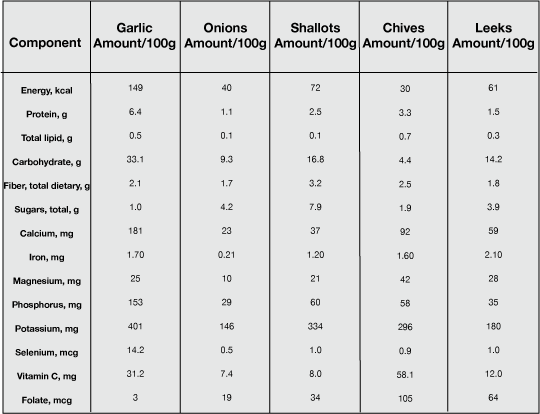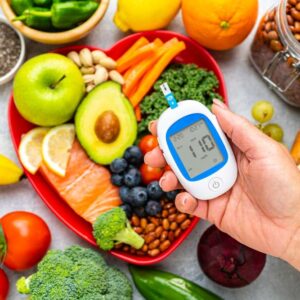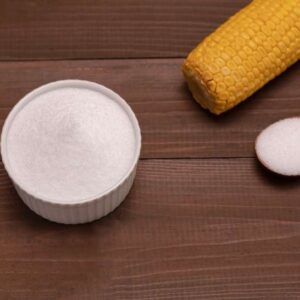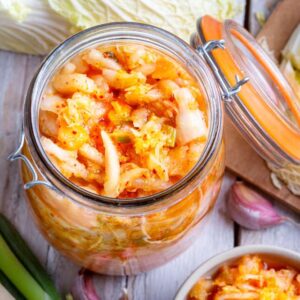Cry Away Cancer With This Kitchen Staple
- Bring on the tears to boost your health
- The smellier the better
- Get chopping! Find out why.
Dear Reader,
Most of my memories of my grandmother’s cooking have one food in common — onion.
Whether she was making spaghetti, sandwiches, or chicken, she was constantly chopping up or chewing on a raw onion.
And when she wasn’t adding onion to what she was cooking, she was chopping it up for a veggie tray.
In fact, one of my most favorite things about visiting her is the ever-present tray of vegetables from her garden with every meal, even sometimes at breakfast!
While there are always a variety of veggies to choose from like cucumbers, tomatoes, and peppers, for her, the star of the tray is either a raw, very pungent onion or raw green onions.
But to 9-year-old me, this was pure insanity.
I often thought, Why would anyone want to eat a raw onion?! They are smelly and make your eyes water!
Actually, one of my brothers and I were so disgusted by them we referred to onions as the “devil’s fruit” because of their pungent smell and taste. (We later grew up and realized that onions aren’t fruit and the devil has nothing to do with them, but it got the point across at the time.)
Yet, whether she knew it or not, all of those foul-smelling onions were helping to keep my grandma healthy. And it seems as though they worked. She’s 92 and has a totally clean bill of health!
Today, Living Well Daily will take you on a walk through the onion patch to bring you the best variety of onions to ensure you reap the most health benefits.
First, let’s talk about what onions can do for you.
![]() Allium Powers
Allium Powers
Onions may be the most popular of the Allium vegetables, but there are many powerful members in their family. These include all varieties of edible onions, garlic, shallots, chives, and leeks.
All Allium veggies have similar nutritional profiles, with many nutrients and macro nutrients, except garlic, which has a higher mineral content. 2
Content of selected nutrients in raw Allium vegetables

Source: National Center for Biotechnology Information
In addition, all members of the Allium family have many bioactive compounds. Some of these include flavonoids, antioxidants, and phenolic compounds, which help fight cancer — a disease that is estimated to kill over 595,000 Americans this year.1
Flavonoids and phenolics fight cancer by deactivating free radicals and slowing the productions of substances that can cause damage to normal cells.
Another key health-promoting and cancer-fighting component in Allium vegetables is bioactive sulfur compounds. These compounds are responsible for the distinct smells and flavors of onions and garlic. It’s thought that theses sulfur-based compounds may help impede tumor growth.2
Not only do they destroy cancer, there is evidence that Allium vegetables can help support heart health due to their high levels of quercetin, a powerful flavonoid.3
To sum it up, Rui Hai Liu M.D., Ph.D., a food scientist and associate professor at Cornell University who lead a study on the powers of alliums reports, “Onions are one of the richest sources of flavonoids in the human diet, and flavonoid consumption has been associated with a reduced risk of cancer, heart disease, and diabetes. Flavonoids are not only anti-cancer, but also are known to be anti-bacterial, anti-viral, anti-allergenic, and anti-inflammatory.”4
While all onion and garlic types offer health benefits, it’s important to select the most nutritious variety and then prepare it in a way that preserves the bioactive compound.
![]() No Onion No Cry
No Onion No Cry
Liu points out in his study that certain alliums have higher levels of bioactive compounds:
Our study of 10 onion varieties and shallots clearly shows that onions and shallots have potent antioxidant and antiproliferation (cancer growth) activities and that the more total phenolic and flavonoid content an onion has, the stronger its antioxidant activity and protective effect.4
While you may prefer the sweeter and less odiferous qualities of a Vidalia, they have the lowest phenolic content. You may want to consider switching to shallots, which have a level of phenolic chemicals that is six times higher.
And for higher flavonoid levels, use Western Yellow onions — they have 11 times more flavonoids than the milder Western White.4
A good rule of thumb here is the more pungent, bitter, and tear-producing an onion is, the better it is for you.
When a bulb of an allium plant is crushed, chewed, or chopped, it releases its cancer-stopping chemicals. However, some of these compounds are heat sensitive.
In order to get the most health out of your alliums, it’s probably best to eat them raw, just like my grandma.
If you want to cook them, be sure to chop them finely in order to cause the chemical reaction that produces the protective bioactive compounds. Remember, when your eyes begin to tear, it’s because of all the health-boosting and cancer-fighting compounds being created! 5
If you have a raw onion or garlic recipes you want to share, please do! nmoore@lfb.org.
Live well,

Natalie Moore
Managing editor, Living Well Daily
Sources
[1] Cancer Facts & Figures 2016
[2] Garlic and onions: Their cancer prevention properties
[3] What’s New and Beneficial About Onions
[5] Onions and Garlic are Anti-cancer Foods
Written By Natalie Moore
Natalie Moore is a dedicated health researcher with a passion for finding healthy, natural, and science-based solutions. After a decade of direct healthcare experience in western and natural medicine, she was involved in public health research before joining Living Well Daily.
View More Free Articles
Stop Obsessing Over Diet Trends
Can we stop with the endless diet debates already? Every other week there’s a new headline shouting about which diet is best for weight loss, heart health, or diabetes. Paleo, keto, low-carb, high-protein… it’s exhausting. And now, a new meta-analysis is out comparing the Mediterranean diet, the DASH diet, and something called AHEI (that’s “Alternative...
A New Reason to Ditch Processed Junk
If you’ve ever walked the inside aisles of your local grocery store and thought, “This is all just junk,” your instincts were spot on. A new study published in the journal Thorax just added another red flag to the list of dangers linked to ultra-processed food—a 41 percent higher risk of lung cancer. That’s right....
When Being Winded on Stairs Is Serious (And When It Isn’t)
I had an athlete visit me recently because he experienced shortness of breath while climbing stairs. He is in great shape, so he was worried about what it might mean. “Doc,” he said, “I run five miles three times a week. Why am I huffing and puffing after two flights of stairs?” His concern is...
Study EXPOSES Hidden Danger Lurking in Your Car
We think of our homes and cars as safe havens. But according to a startling new study, they may be flooding your lungs with microscopic plastic particles—every single day. Researchers in France recently found that adults inhale an average of 68,000 microplastic particles daily from indoor air alone. To put that in perspective, that’s about...
Mailbag: Is Modern Food Making You Snore?
“What can cause snoring, and is there a way to correct this issue?” —Seeking Silence Hi Seeking, Snoring happens when the soft tissues in your throat relax and vibrate as air passes through during sleep. While several factors can cause snoring—from sleep position to nasal congestion—I want to share one trigger that might surprise you....
Simple Food Swap SLASHES Dementia Risk 28%
Let’s be honest… who would jump at the chance to cut their dementia risk by 28 percent. And no, you don’t need to run marathons, survive on broccoli, or learn to play the zither (whatever that is) to make it happen. All it takes is one easy swap—something that’s probably already in your refrigerator. Researchers...
This SMART Floss Exposes Hidden Health Danger
Scientists have created dental floss that doesn’t just clean between your teeth—it also tracks your stress while you’re flossing. Now, I know what you’re thinking… “Great—now even flossing is going to stress me out by telling me how stressed I am.” But this fascinating new tool from Tufts University could be a game-changer for understanding...
Is This "Safe" Sweetener Damaging Your Brain?
The headlines are alarming… “Popular Sugar Substitute Linked to Brain Cell Damage” and “Erythritol Could Damage Critical Brain Barrier” are just two of the dozens I’ve spotted recently. But before you toss every sugar-free product in your pantry, let’s take a closer look at what this study actually shows—and what it doesn’t. The latest research...
This Summer Threat Could SPIKE Your Blood Sugar
Picture this… It’s another scorching hot summer day. You crank up the air conditioning while watching the weather forecast, which predicts yet another “record-breaking” heat wave. It’s starting to feel like just another miserably uncomfortable summer. But what you might not realize is that—if you have diabetes—those rising temps could do far more damage to...
Move Over Yogurt—5 Foods That Pack MORE Probiotics
Let’s talk about your gut. The microbiome is the collection of trillions of bacteria and other tiny organisms that live in and on your body—especially in your gut—and help keep you healthy. I’ve written often about how vital it is to maintain a healthy microbiome. And you might have dutifully added yogurt to your shopping...









